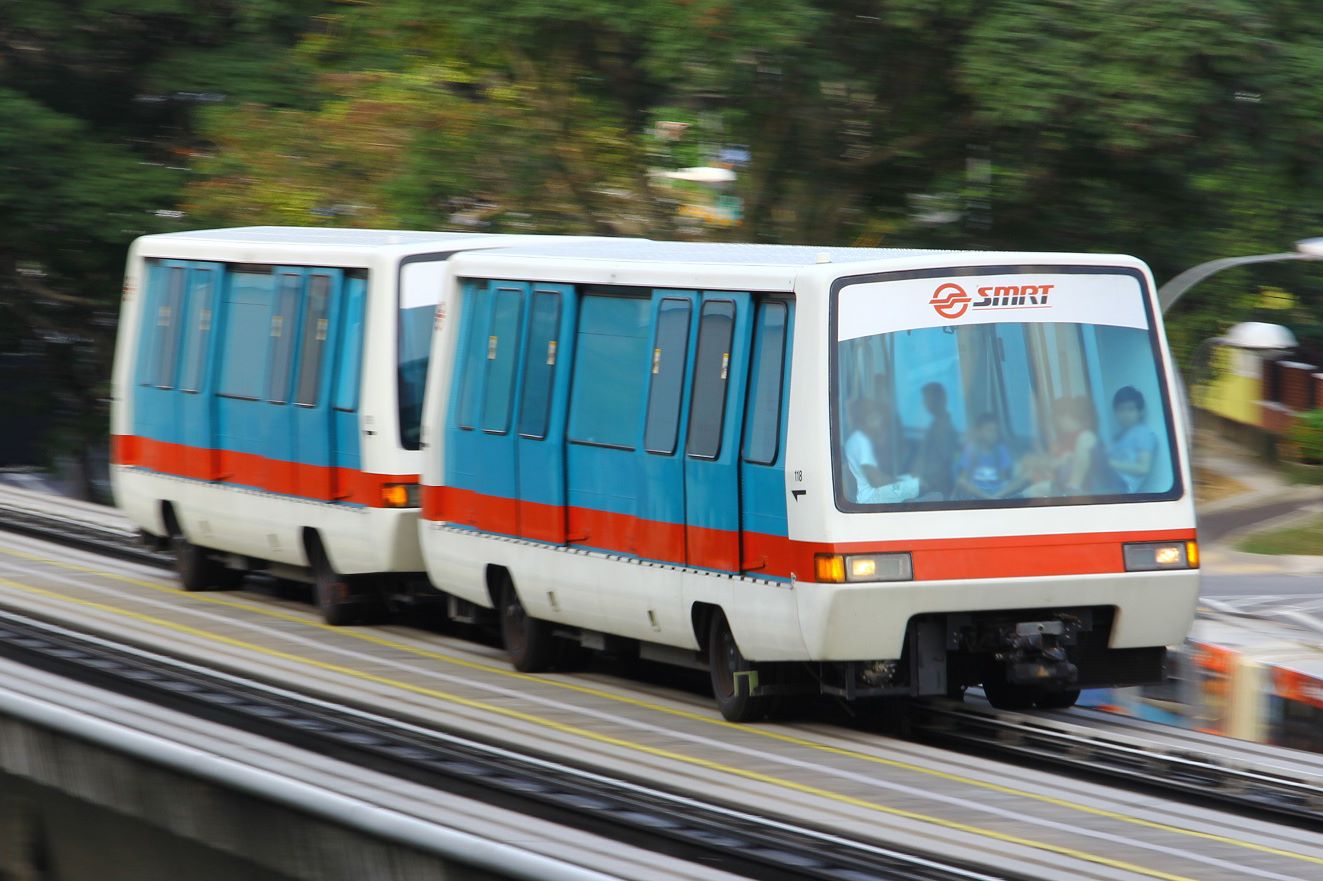Channel NewsAsia published a story on Wednesday evening about a coroner's inquiry that just couldn't help but catch our eye.
It starts off innocuously enough about the tragic death of a man: sometime after midnight on March 24 this year, a 43-year-old man, Ang Boon Tong, drunkenly fell onto the tracks at Fajar LRT station — on the Bukit Panjang LRT line run by SMRT.
Unfortunately, because his blood alcohol level was more than three times over the legal limit for driving, he couldn't navigate himself off the tracks, and got mowed over by two LRT trains in succession. He didn't survive.
But here's where it gets crazy:
Enter Chia Chun Wah, senior vice president for the Circle Line and Bukit Panjang LRT at SMRT, who took the stand at the coroner's hearing on Wednesday.
Here are the amazing things he said — and truth be told, we're saying this objectively:
1. LRT trains have no obstruction detection systems, and there are no plans to add any
Chia said there are 143 closed-circuit TV cameras monitoring the BPLRT line, and at Fajar LRT station in particular, there was one staff member at the operations control centre tasked to oversee 46 CCTV feeds on 22 screens.
Yes, one.
Chia added that that one staffer was at the time also busy with closing the LRT station, so he or she inadvertently didn't notice a dude falling off the platform onto the tracks.
2. Here are the "safest options" a passenger can take, should they fall onto the LRT tracks
And what follows is so good that we have to quote it directly from the CNA report:
He said the safest option for passengers who have fallen onto the tracks is to stay at the “safe location” in the middle of two electrified train tracks, which is not clearly marked out. “We don’t publicise that,” Mr Chia said, adding that there are, again, no plans to do so.
Now, it's not as if we expect SMRT to expect people to be falling off the platforms and onto the tracks randomly every now and then, but surely expecting a passenger to know this and to do it on their own is unreasonable, to say the least.
[related_story]
But never mind, we move on. Chia helpfully suggests a second thing a fallen passenger could do:
Another option for passengers who fall onto the tracks is to shout for help in the hope that someone on the platform would sound the alarm by pressing the emergency stop plunger located at either end of the platform. This would cut power to the trains.
Fine. That's great. But how does a person know what the plunger does, much less to actually press it?
But, Mr Chia said, there is no signage to tell passengers what happens when they press the plunger – and there are no plans to do so.
Wow. We have no words. But we hear there's a third option:
Yet another alternative is for a passenger who has fallen onto the tracks to make their way to the end of the platform, where there is a flight of stairs leading back into the station, Mr Chia said.
Should you be surprised? There is a "however" coming once again:
However, there is “no signage to show where the stairs are”, he added.
But wait! There is hope!
The CNA report also highlighted an initiative mentioned by Chia in the hearing: a video analytics system to detect foreign objects on train tracks.
We must disappoint once again, there is a qualifer:
However, even if the system was able to recognise an object on the tracks, it was unclear whether it would also be able to send an alarm to the OCC and stop the train.
In light of all this, we're impressed by State Coroner Marvin Bay's composure amid the outrageousness of all that Chia said. All he mentioned in response to everything above, were these:
“It is entirely conceivable that a person who falls onto the tracks may be infirm, inebriated, incapacitated or cognitively impaired and not have the required knowledge or ability to seek refuge at the (“safe location”) or make for the staircase to save themselves...
...it would appear that he was too intoxicated or disoriented to fully appreciate his precarious situation. He remained on the track without calling for help or making any attempt to extricate himself from his predicament.
“It would also be useful to raise public awareness of the emergency stop plunger, the safety zone on the tracks and staircase access back to the platform to avert disaster whenever a person falls onto the tracks.”
He was even kind enough to laud the video initiative as "a step in the right direction".
Can't argue that.
Coroner's inquiry into March 2017 LRT accident
Channel NewsAsia's court reporters regularly cover a multitude of different types of cases, ranging from criminal to civil suits that are of public interest.
Occasionally, they report on coroner's inquiries, which are held to determine the reason a person has died.
You might recall these happening in the case of Shane Todd, the American engineer who was ruled to have committed suicide, but whose family believes he was murdered, or Benjamin Lim, the teenager who died after a police interview investigating him for allegedly molesting a girl in a lift.
Here are some equally interesting but totally unrelated stories:
5 so-called crazy things people could do if they were given $100,000 to save the environment
Ways to make the government listen to you
How to not ruin your holiday when signing up for tour packages
Who looks after our ailing seniors outside of general hospitals?
H/T: the Channel NewsAsia reporter who sat through all that and didn't scream
Top photo from SG Trains.
If you like what you read, follow us on Facebook, Instagram, Twitter and Telegram to get the latest updates.


